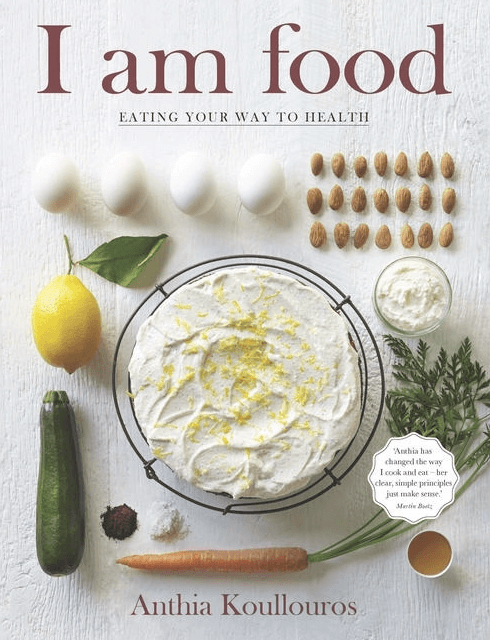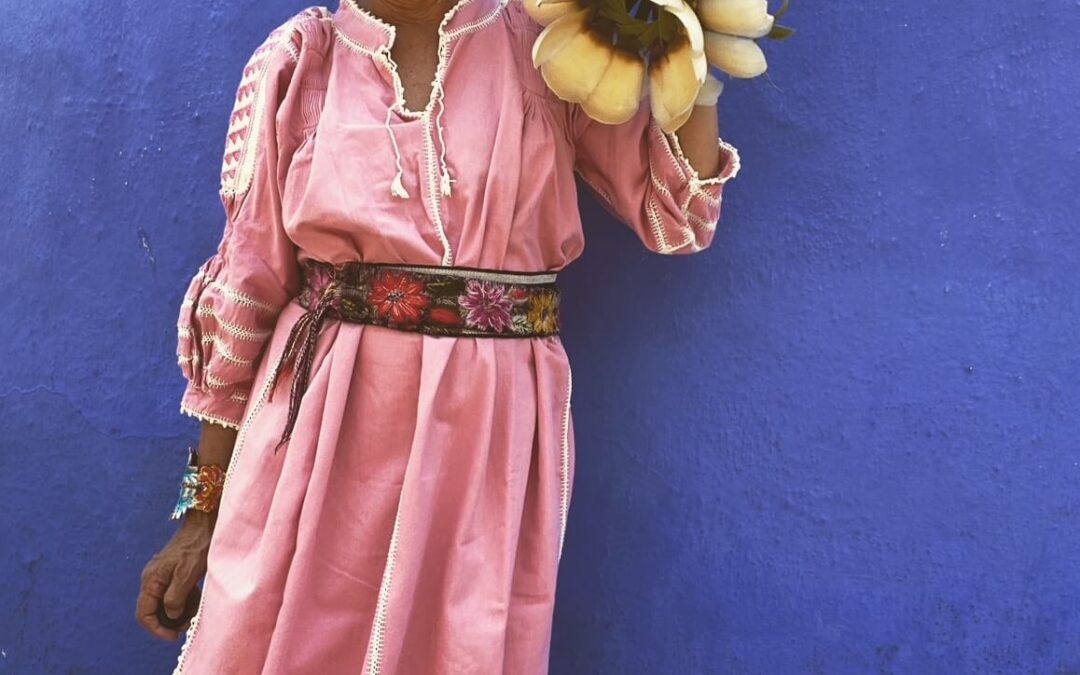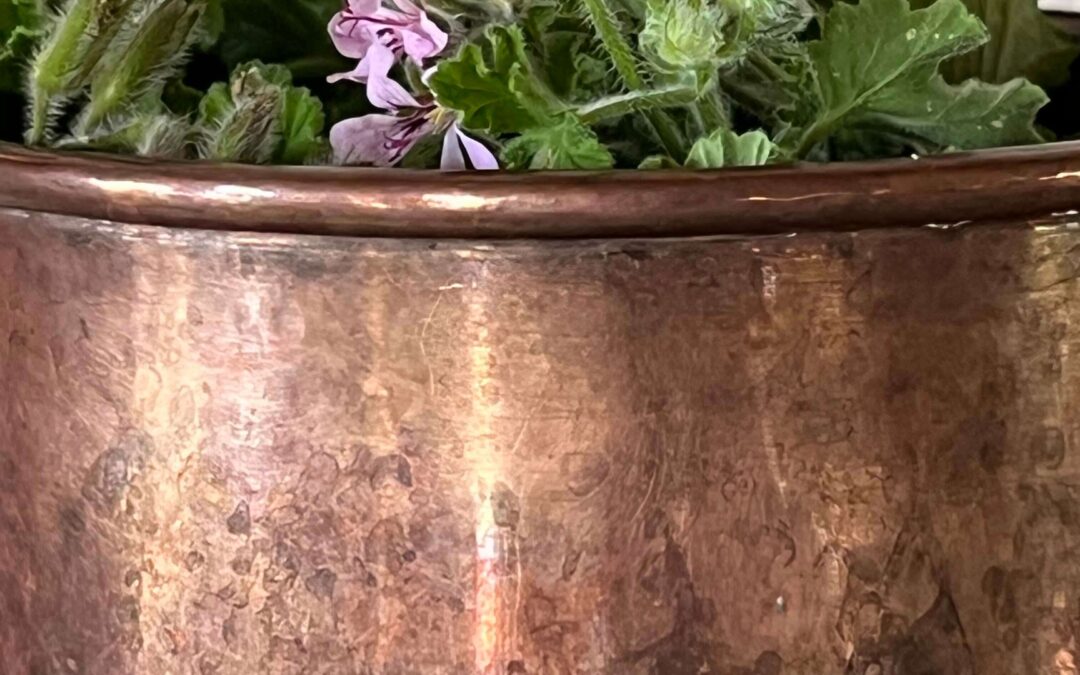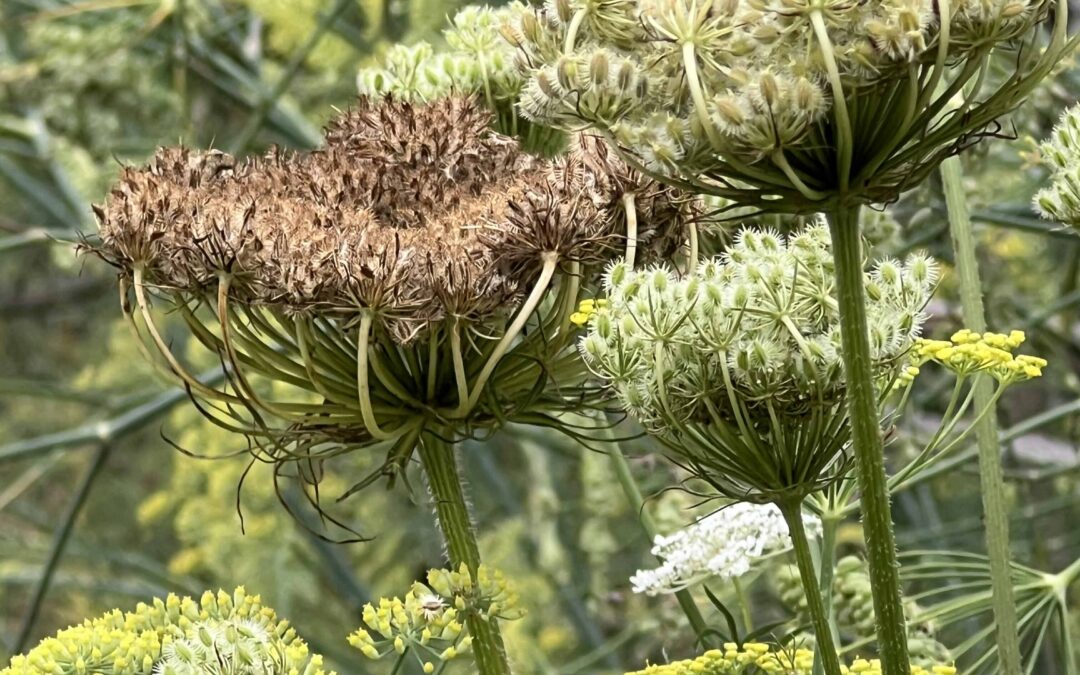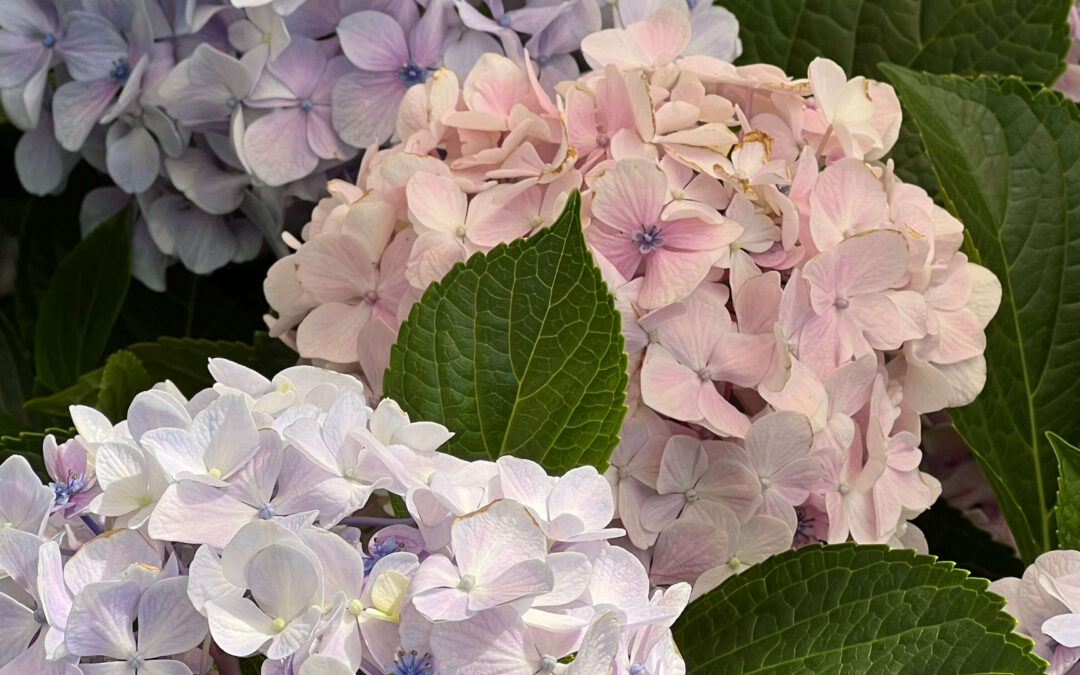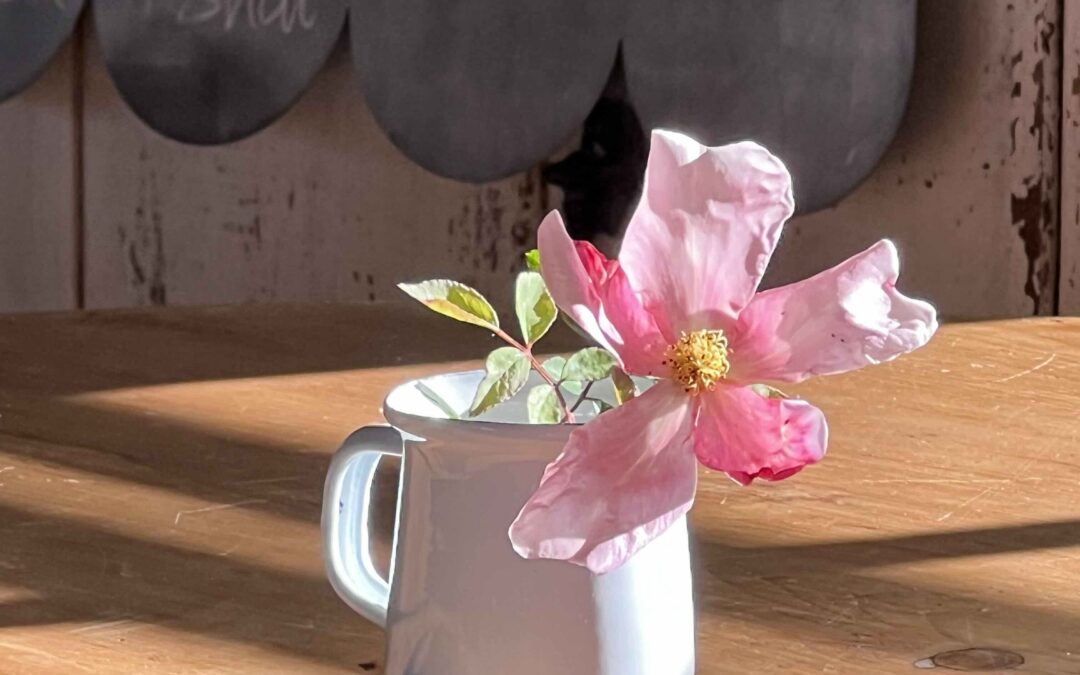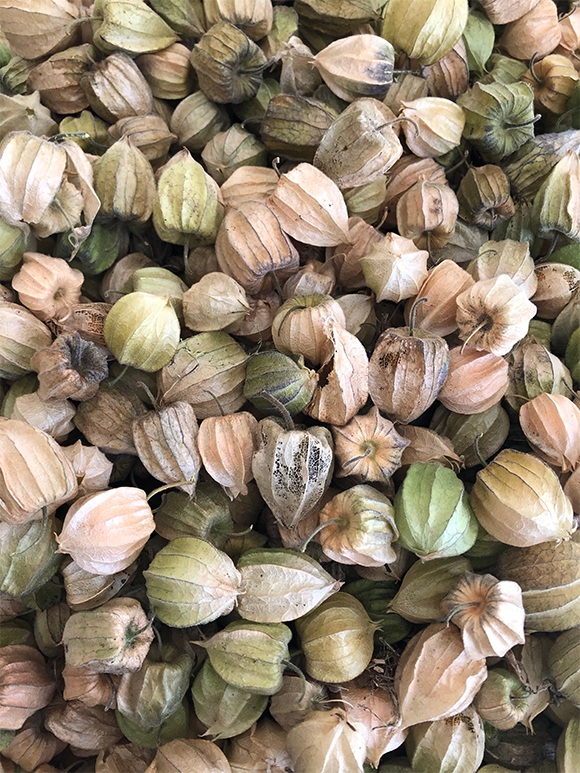
Play Podcast
For just a very short time, rain pitter pattered on tin roof and parched ground…then the glory days set in. Will there be water enough to support spring growth? Only time will tell…
What a frantic time of year, is the cusp of winter / spring. There are so many jobs to complete in the ornamental garden. Don’t even speak to me about the state of the potting shed! So it’s just as well the kitchen garden potters along, delivering an endless supply of fresh produce to the kitchen; with a minimal amount of input from me.
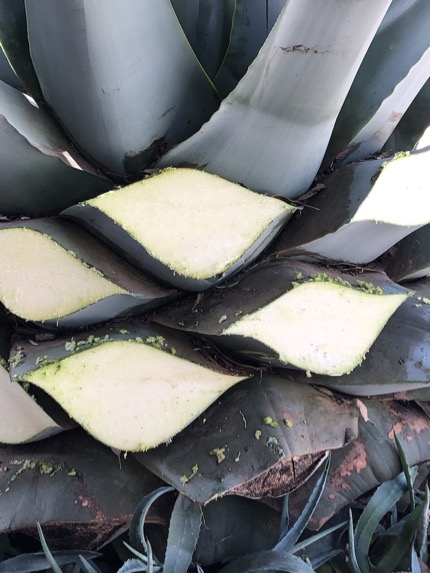
The race is on to complete outstanding tasks in order to be able to focus on the kitchen garden as soon as crop rotation time rolls around….and it’s coming….
Tasks like ‘slaying the dragons’ as Brian used to call trimming up the agaves! While I’ll not dwell on the ornamentals; I did spend quite some hours with Thalia carrying out this two-man job that must be tackled once a year; along with a plethora of others…and we’re not done yet!
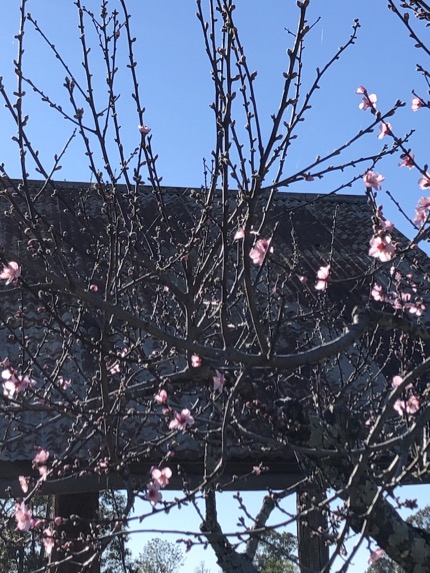
The first blossoms set on the almond tree during the second week of August; which I’d call a good ten days to two weeks ahead of when they used to. The two surviving almonds were amongst the very first trees we planted at Glenmore. How I love to see their clear pink blossom set against the rusty hayshed roof and a clear blue late winter sky.
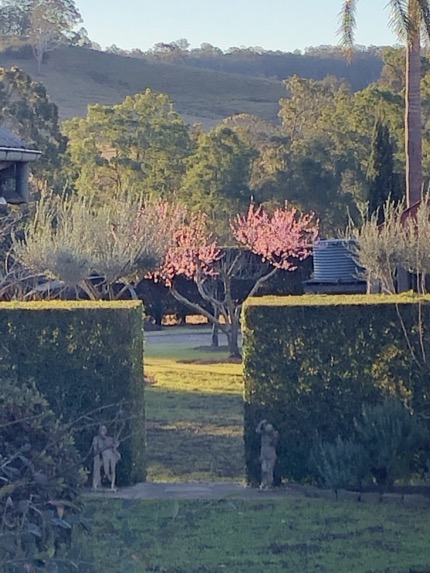
Only days later, the branches were fully laden. The blossom held well this year…a beacon of pink that shines bright to lift the spirits from the winter doldrums. So often it’s short-lived. We so look forward to this marking of winter’s end…this tree is our harbinger of spring.

But still we needed a fire in the Dairy for late winter workshops, and given the time of season, it seemed all things, not just the dancing flames, were orange…

recorded that sound!)…
The pumpkins probably won’t keep much longer….

So their beautiful golden flesh needs to be used!
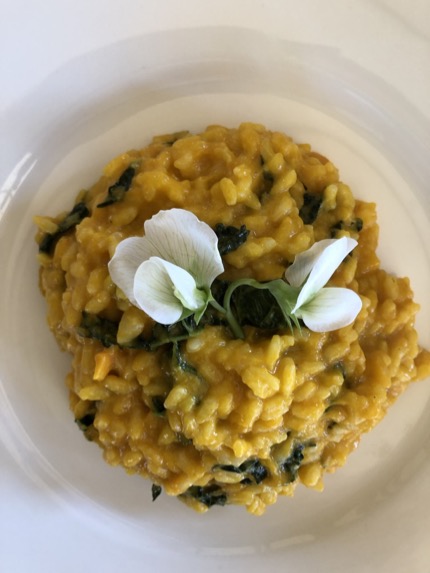
Pumpkin risotto, threaded with ribbons of cavolo nero and topped with a pea flower or two seems as good a use as any…
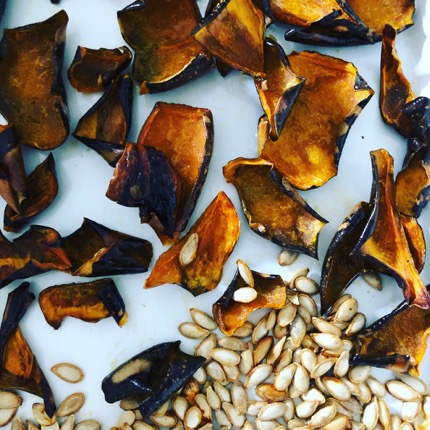
Let’s not waste the skin or seed…every morsel is precious!
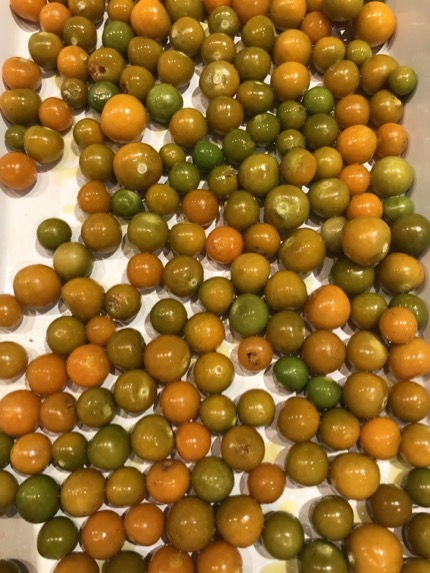
Cape gooseberries arrived in a similar hue…
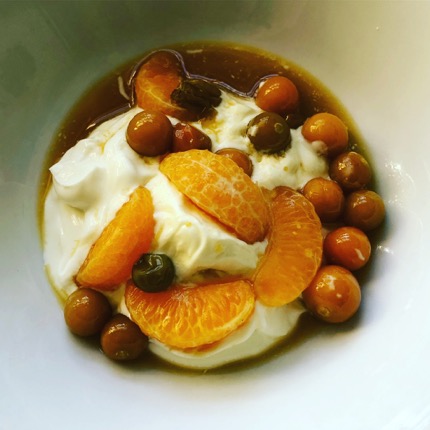
They’ve made the most delicious breakfast alongside clementine segments (quickly poached in a little honey and a dash of water). Warm home-grown fruit with yoghurt…I’m not sure winter breakfasts get much better! Just don’t ask me to milk an animal to make the yoghurt!

Carrots haven’t let down the colour theme either…I seem to have a combination of orange and yellow…well, that’s what happens when you start collecting and sowing your own seed! But whatever their colour; their flesh is simply dense with flavour. There’s something oh so special about pulling carrots from the earth…the joy and surprise to see and feel the length as each emerges; the smell, combined with a deep sense of satisfaction, of carrying your own bunch to the kitchen.
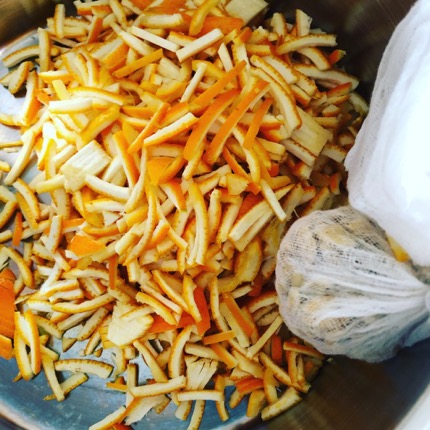
To cap off the orange theme, there was Seville Orange Marmalade to cook. I saved the sequence of making it to ‘insta highlights’ if you’d like to have a quick squizz.
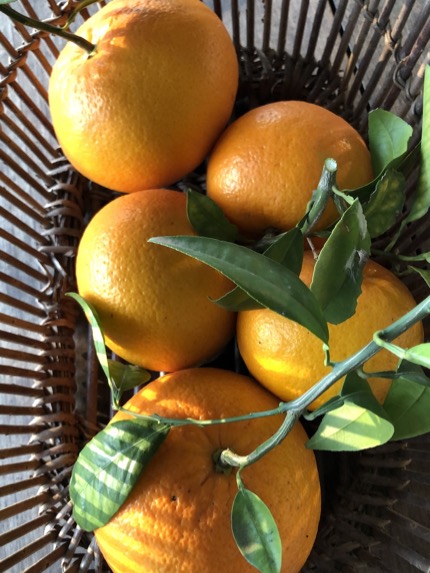
While there were only five Seville’s on the young tree (that replaced our first-planted effort…why it died some years back is anyone’s guess), their weight made a double batch of marmalade…they were huge! And as for the aroma that wafted through the house...mmmmm…..
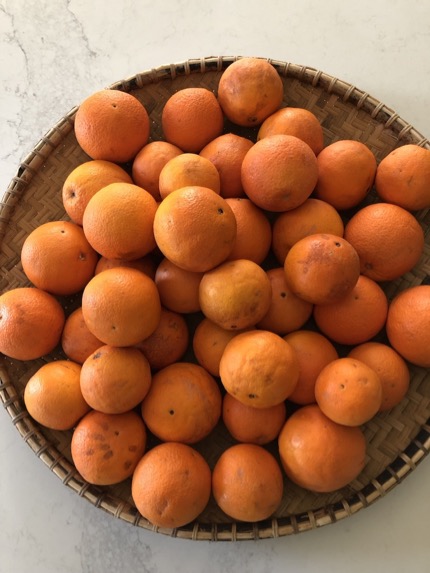
Though no comparison on the size scale, the Navels in the kitchen garden are prolific; yielding more than enough for our sweet daily juice…there are drop-offs to friends of these beauties!

When everything wasn’t coming in orange…..it favoured the purply pinks…with beetroot featuring heavily in recent weeks…baked; in soup, or risotto….

Along with purple podded Dutch pea pods and flowers scrambling up their wigwam…
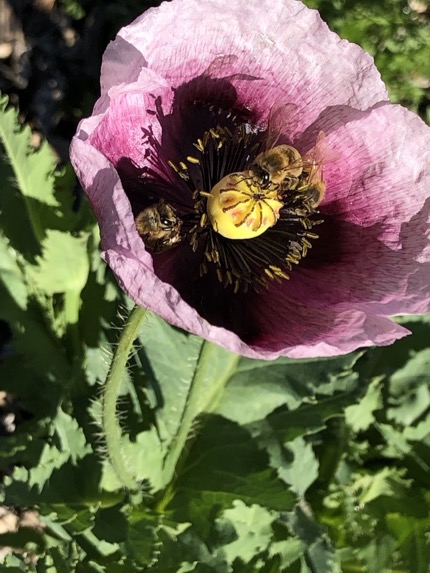
Heavily blotched kitchen garden poppies, so loved by the bees…
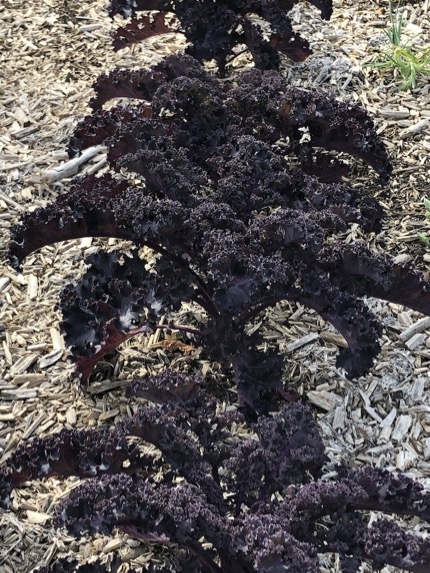
And frilly purple kale….
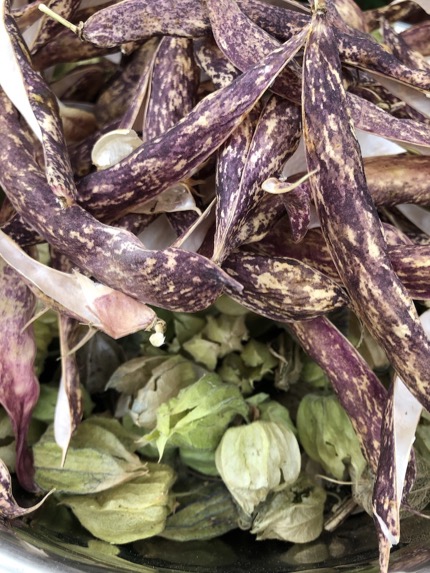
Even the compost seemed to be colour co-ordinated!
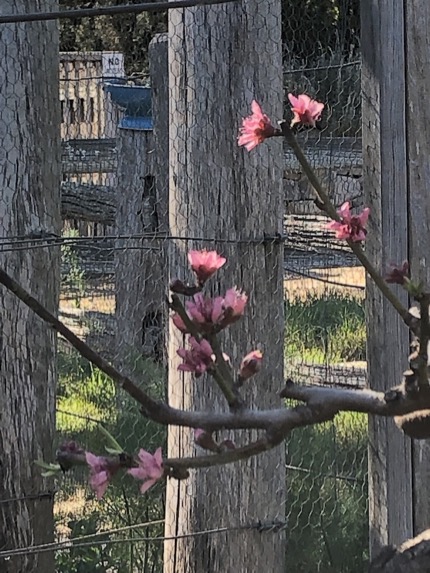
The first of the espaliered peach trees came into blossom…
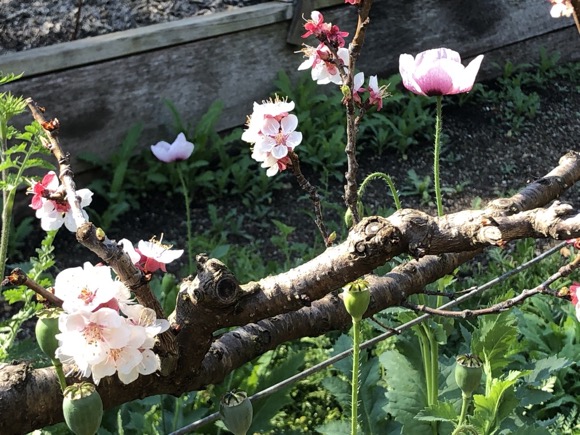
Preceded just, by it’s neighbour, the first of the apricots. There are a lot of self-sown poppies under the espaliered fruit trees, which ensures a lot of bee action at this all important time of pollination. The more flowers under the fruit trees, the greater the attraction for the bees to visit the blossom.
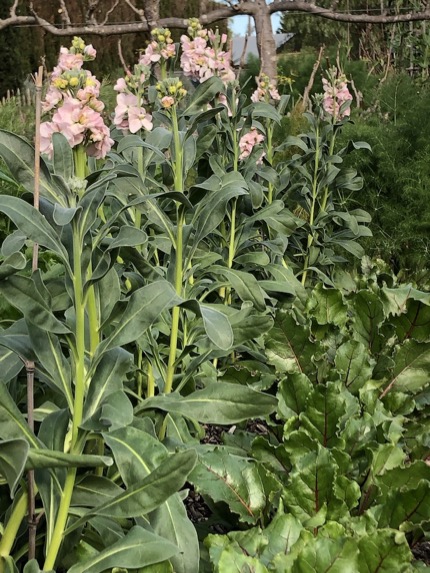
Then of course there’s the Stock; with its dusty, gently spiced sweet scent in the prettiest shade of pink! I am so excited about this row! Silly really…but it’s often the simplest things that bring the greatest pleasure. I don’t know where my love of Stock really came from…those old fashioned annuals just seem to go with my childhood and I simply love them in the kitchen garden. I do hope this one’s a keeper for Diggers to offer in the future; because if it is, I’ll repeat it each year. I’ve no idea if I can collect the seed….but time will tell and if I can, I certainly will!
I hope to keep it flowering long enough for the beetroot leaves to catch up in size. But even as it is now, their crimson veined leaves are a pretty companion to the pink flowers and grey-tinged foliage.
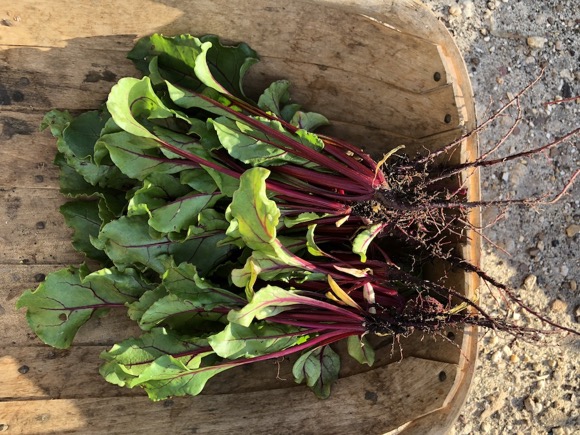
I’ve thinned the beetroot seedlings to well-spaced, ‘single specimens’ at the back of this row, and their globes are beginning to swell, but I’m still working my way through thinning the seedlings towards the north….the front….where they’re still densley packed together. I just tease them out gently (when I think I’d like to add them to something in the kitchen) so as not to disturb the most sturdy looking plant at the approximate optimum spacing for a fully mature globe.
At the beginning, all the thinnings were very fine with tiny leaves, but as the weeks move on, they’re getting larger…some even have a tiny baby beet attached. What I can tell you, is that we seem to have eaten an enormous number of beet leaf thinnings! And in the end, I’ll end up with a row of well spaced, fully grown beetroot.
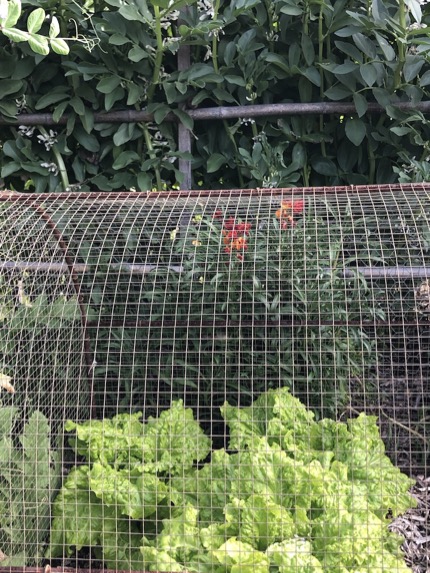
In the legume bed behind, the long-awaited row of evocatively fragrant wallflowers are beginning to flower between the frilly Australian yellow lettuces (protected in their wire tunnel) and the tall, tightly packed structure of broad beans behind.

Each broad bean flower develops, slowly at first, into a tiny, fine new bean….
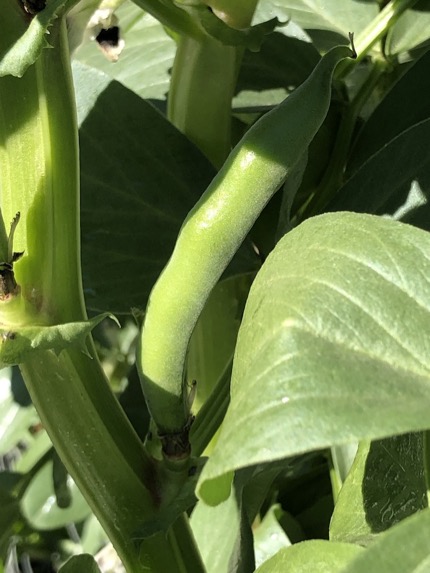
That is soon the perfect size to crunch whole; fuzzy pod and all. At this size, they rarely make it to the kitchen!
But just a day or so later, splitting open the outer pod will reveal new baby broad beans, nestled in their downy case. If the beans inside are developed enough to eat on their own, though no more than the size of your little finger-nail; the outside pod will be too tough to eat (well, raw anyway!).
At this stage though, no double-shelling of the bright green inner bean is necessary. In case you missed it, I wrote and included images about broad beans and their double-shelling in the notes for episode two.
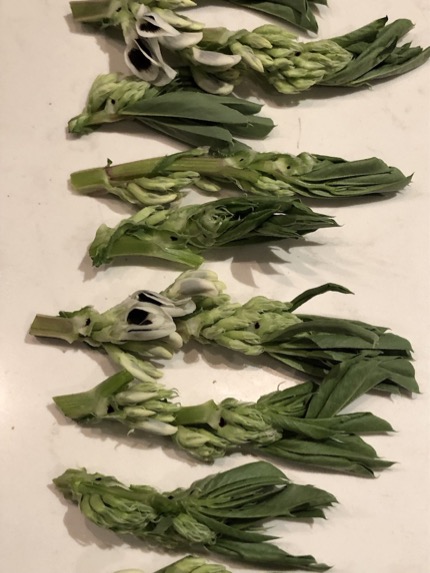
Of course we’re still eating ‘tips’ too: thanks to ‘tipping’ the leaders, each plant has pushed out more side shoots. As a result, it means new tips keep coming on, so the fun of tip-eating isn’t over yet!
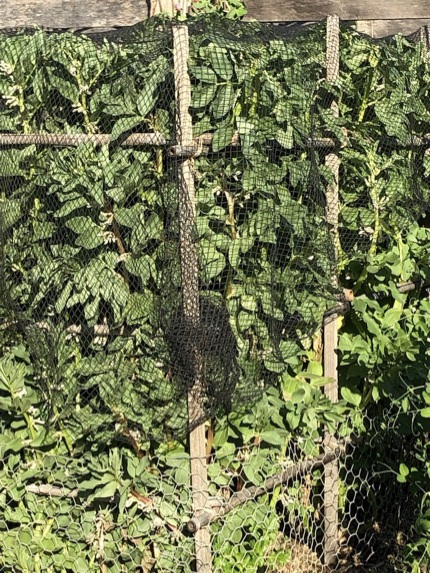
But be sure to keep new growth contained within the horizontal keepers of the structure, just as you did with the early stems…it’s very easy to forget about these new ones that can escape all too quickly, so are then vulnerable to the wind.
It’s now the structure can get completely out of control!
Equally, it’s now that the perfume emanating from this mass of flowers is so intoxicating on a warm, still afternoon. It’s one of those evasive scents…you can’t put your nose to a flower, inhale and expect to smell anything at all. But be still….close by….and you will be swamped….
By the way, the whole structure is bound to be alive with bees going about their work, so be careful when you push the stems inside their boxes, and pick tips or beans! You don’t want to get stung…
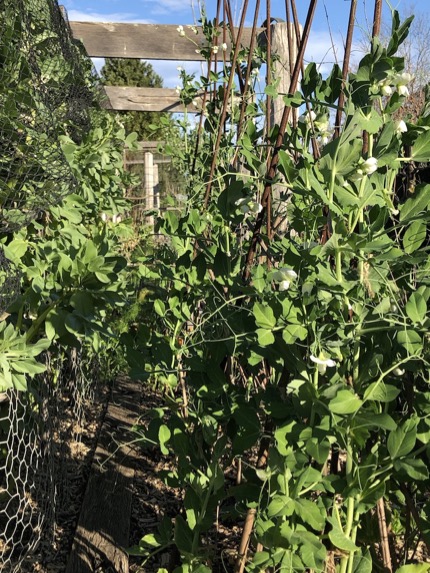
Right behind the broad bean structure are the three late-sown wig wams of sugar snap peas. The peas are scrambling up their rusty rods now, so I tie them in a couple of times a week. What a pleasant task to time for the afternoon profusion of broad bean scent….if I can!
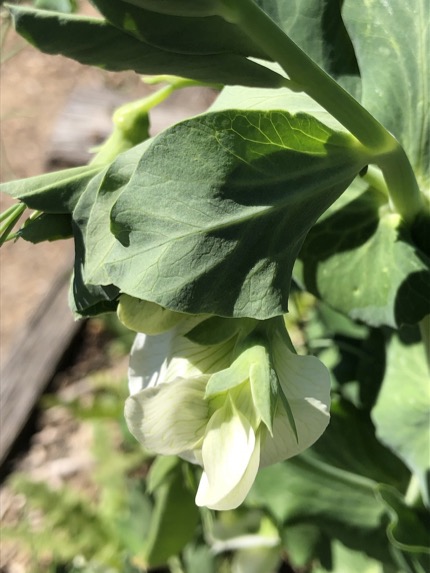
This is the absolute optimum moment to eat a delectable, crunchy, fat pea bud…when another emerging flower is still tucked inside! These are the most indulgent of treats…even more than a single pea flower!
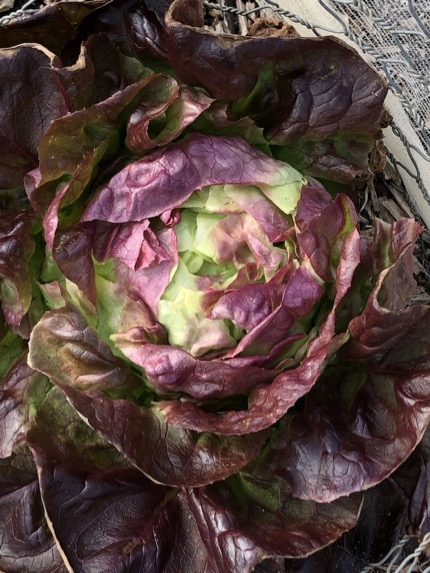
Thanks to protecting them through the frosty weeks, we do have a whole row of mignonette lettuce! Some are developing solid hearts of fine leaves now…hopefully they won’t all be ready at once!
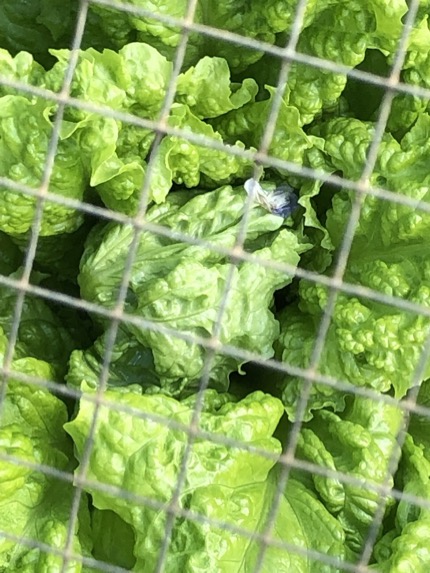
The mignonettes combine and contrast in a leaf salad with the crinkled leaves of Australian yellow leaf; along with all the other random leaves still growing around the garden…..radicchio, rocket, red elk and giant red mustards and land cress, scattered with calendula and nasturtium petals.
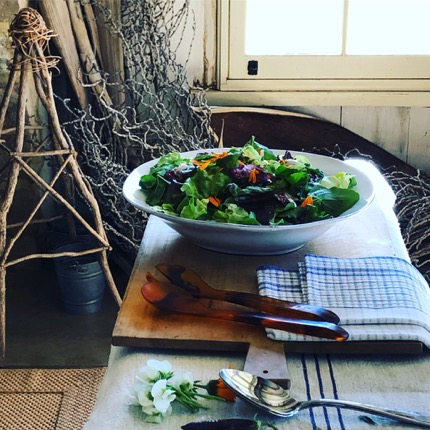
My kind of leaf salad!
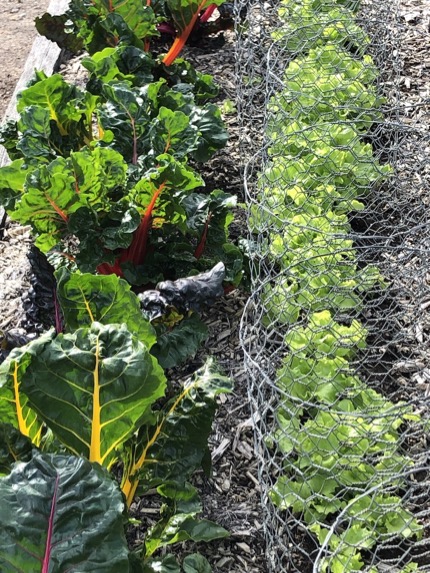
In the leaf bed, the coloured chard is settled in for the foreseeable future, while the last row of Australian yellow leaf I sowed will infill well, while we wait for the next batch of hearting lettuce that will be some way off eating.
Remember I couldn’t plant more ‘hearting’ lettuce in mid-winter? Hopefully, these are the answer to what might otherwise be our hungry gap on the lettuce leaf front; but already I’m thinning out enough seedlings to make a huge contribution to leaf salads.

The very first of the newly sown carrot seeds are germinating a few rows along in the same bed. They were covered with a strip of very fine fleece from the moment of sowing, ’til I noticed this on my morning round…so I whipped off the cover immediately!

This is going to be the summer root veg bed; so I’m making early sowings where there’s empty space. And covering where I’ve sown for protection…from everything!
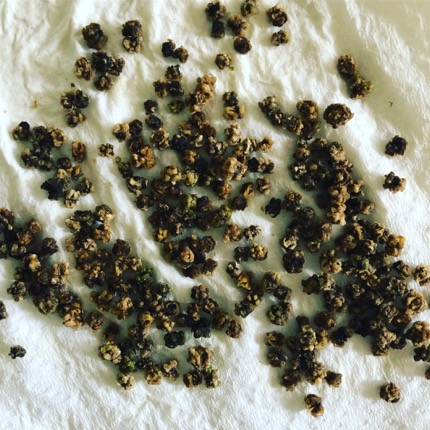
Beetroot seed were soaked overnight, drained next morning and left to dry on a piece of kitchen towel before sowing.
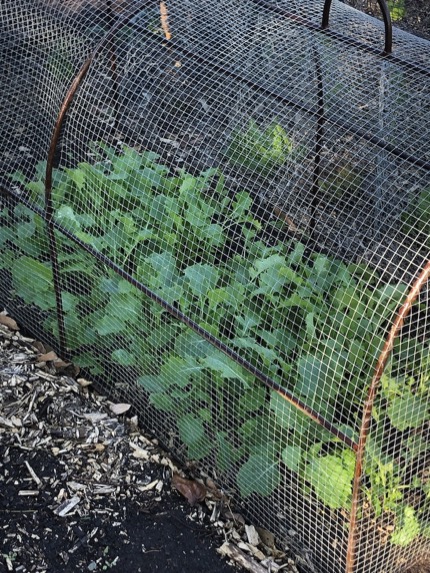
Down the back, young seedlings of cima di rappa flourish…in fact, in just a few days since snapping this image, they’ve doubled half this size again and we’ve also eaten a whole lot more!
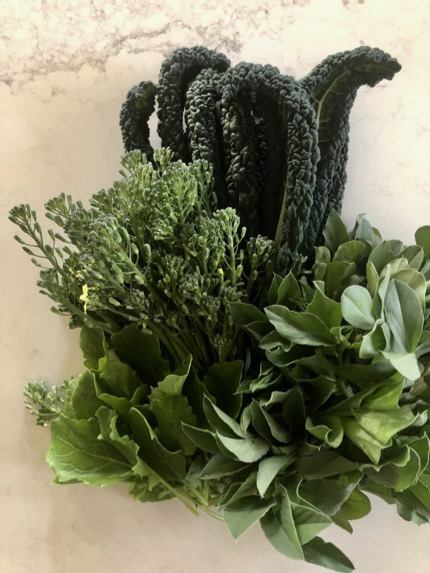
The cima di rappa is making a valuable contribution to the handful of ‘greens’ I bring to the kitchen each day. This was snapped a couple of weeks ago. Each day is different and the ratio changes all the time….there’s less kale now, the broad bean tips come in waves, as does the broccoli, but there’s much more cima di rap now! Plus peas and broad beans….
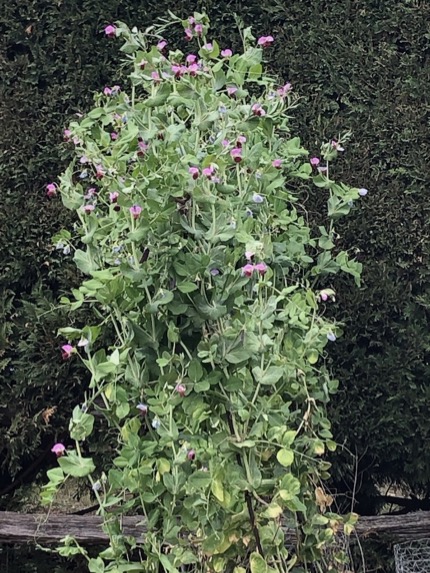
Down the back, the pea tunnels have gone quite mad! I’ve given up trying to tie them in…they’ve created a life of their own now, so all I can do is delight in their billowing beauty and reap the reward of their pea pods.
This is the Purple Podded Dutch pea, who’s seed I’ve been collecting for about 25 years…could be even more now…I’d need to go back through the old photos! But it is a shelling pea…you can’t eat the pods (in case my insta-follower with a query is reading here!).
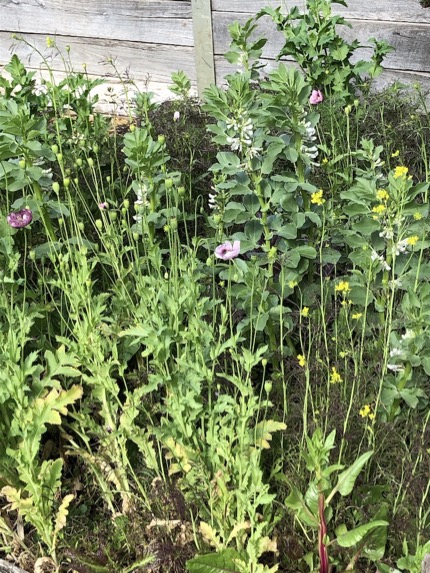
The seed throwing bed on the corner is looking pretty as a picture now. While I’m still gathering the odd leaf to eat, the plants are maturing fast and some red elk has just joined the poppies in flowering…adding to the bee attraction.
Over the coming months, it will all flower, making it one of the main garden pit-stops for bees! Later, down the track, I’ll collect the seed so I can do it all over again next year.
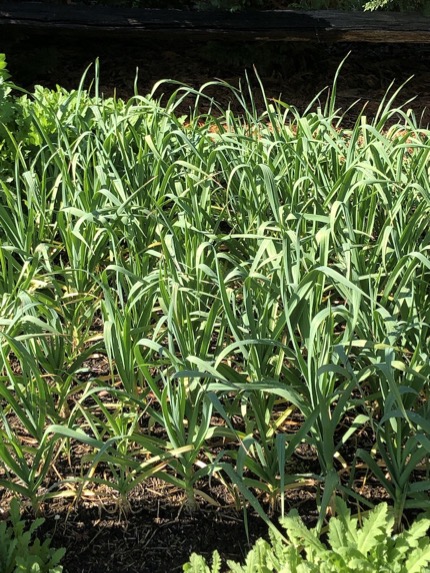
The garlic is looking strong and you’ll be able to pick up on what happens to it next, by revisiting last year’s podcast and notes…right through to when I pulled it out. While I could pull the odd advanced one now (if I’m really in desperate need a hint of garlic in the kitchen) it would look like a thin leek. I don’t expect the bulbs to begin forming for another month or so, at which point I don’t mind so much using it as wet or green garlic. But it won’t be ready to pull, dry and store, for quite some time yet.
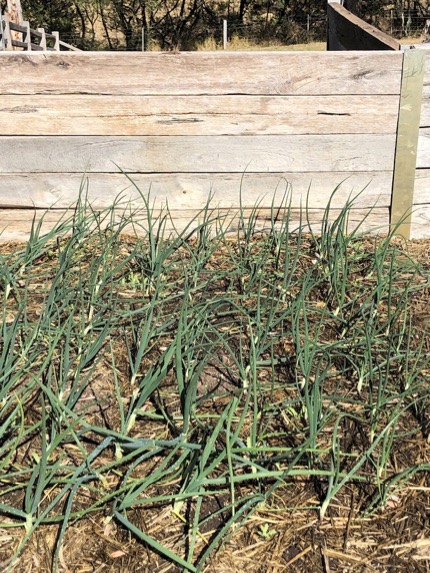
Similarly, the onions will occupy their bed ’til Christmas. Both garlic and onions are longterm crops and although they require little attention through their growing period, they take up a lot of space. I think the resulting bounty is well worthwhile though! You can see the images of last year’s haul in episodes three and four.
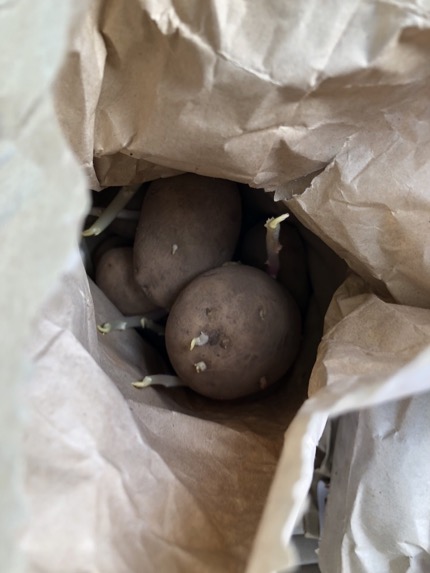
It’s time now, to get another bulk crop in the ground….the potatoes! They’ve all chitted away in their paper bags and it’s a job that must be done. As I’m stuck here at my desk, I asked Thalia to sow three rows between the pea tunnels down the back for me, while I hope to get the rest in the ground this weekend.
Now I know this goes against the potato-growing rules, but I find if I play by them, I have little luck in getting a successful crop. I reckon it’s to do with out climate, but if I ‘mound’ up around them as they grow, as you’re supposed to, I find it’s a sure fire way to kill them. I think our humidity levels are too high by the time they need this task carried out around their new green stems.
So years ago, after a couple of unsuccessful crops, I decided to plant deep, mound them well and add mulch all at the time of planting. On the whole, we seem to get a pretty good result, so that’s what I’m doing again this time.
In the meantime, I’ve noticed a lot of random ‘winter’ potatoes, that grew of their own accord here and there, so digging them up this weekend is also on my agenda, to free up space. I’m on clean up duty….part one of the crop rotation process.

We dug the last of Jerusalem artichokes and certainly have more than enough to eat over the coming weeks! As usual, the best dozen tubers were re-buried. So that’s that. Not another thing needs to be done to them. I’ll expect to see emerging leaves in a few weeks: the long cycle ’til harvest begins all over again.
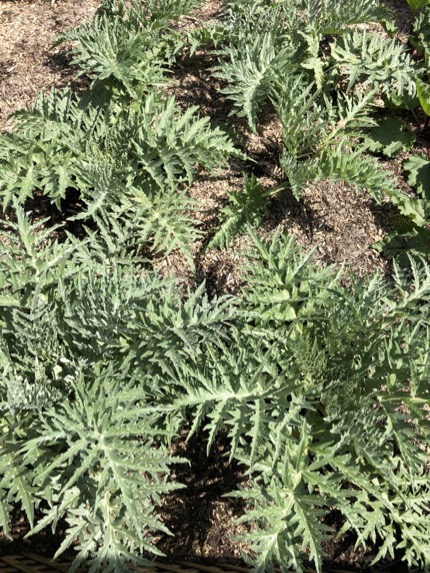
Next door, the new globe artichoke seedlings I planted in the autumn are sturdy specimens now and I’ll expect to see their tiny fruit begin to form deep down in their centres early next month. Fingers crossed!
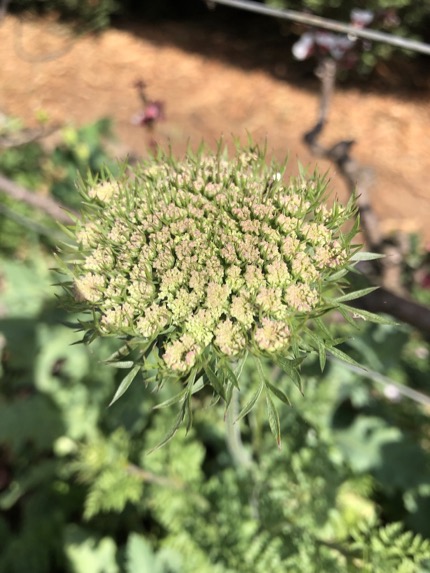
Back down in the kitchen garden, how excited I am to find a self-sown purple carrot flower beginning to colour up in the companion beds! Clearly it’s an escapee from those beauties that flowered last spring/summer nearby. Now I just need the ones I sowed on purpose to follow suit!

A few early fennel flowers are impatient to begin their new season, which I hope bodes well for open garden in November – where as you know, I intend for them to be the highlight!
In the meantime though, there’s a whole kitchen garden to rotate and establish for the summer season ahead!
Truly, I can’t believe these notes complete episode twelve…a full twelve month cycle of kitchen gardening here. As I look at the garden right now, it seems time has stood still, because well, we’re just a few weeks shy of where I began a year ago. This episode closes the loop; it’s the missing segment. So if you revisit episode one, you will pick up from where I’m winding up here…where orange blossom is about to open and scent the air all over again.
But I’m not leaving you quite yet! I know there were a few points I intended to return to…to offer further explanation…to round them out. Had I done so at the time, the episodes simply would have been too long! So just as we began with an ‘introduction’, we’ll end with a ‘wrap’.
In the meantime, I hope you now know exactly where to begin with your own garden as we skip into spring! And if you don’t….then back to the introduction with you!
‘Til next time…

| Going, going…… | Both Meyer lemons and Clementines have gone in the last few weeks. Cape gooseberries, cavolo nero (black Tuscan kale), broccoli, cabbage, kohl rabi, cauliflower, pumpkin, Jerusalem artichokes. |
| Eating…. | fennel, peas, broad beans, broccoli, kale, kohl rabi, carrots, parsnips, celeriac, beetroot leaves and roots, cima di rappa leaves, pumpkin, lettuce, coloured chard, Jerusalem artichoke, celeriac, cape gooseberry, rhubarb, oranges, lemons, fennel fronds, sorrel, salad burnet, mint, parsley, calendula petals, nasturtium petals, red elk, giant red mustard and rocket. |
| Sowing seed of…. | Carrot, beetroot, potatoes (seed potatoes), Jerusalem artichokes (tubers), cima di rappa, parsley and very soon beans, corn and summer flowers like zinnias and sunflowers. |
| Planting seedlings of… | Lettuce, spinach, trying for a spring crop of fennel bulbs. Otherwise on hold ’til all the summer seedlings go in next month. |

